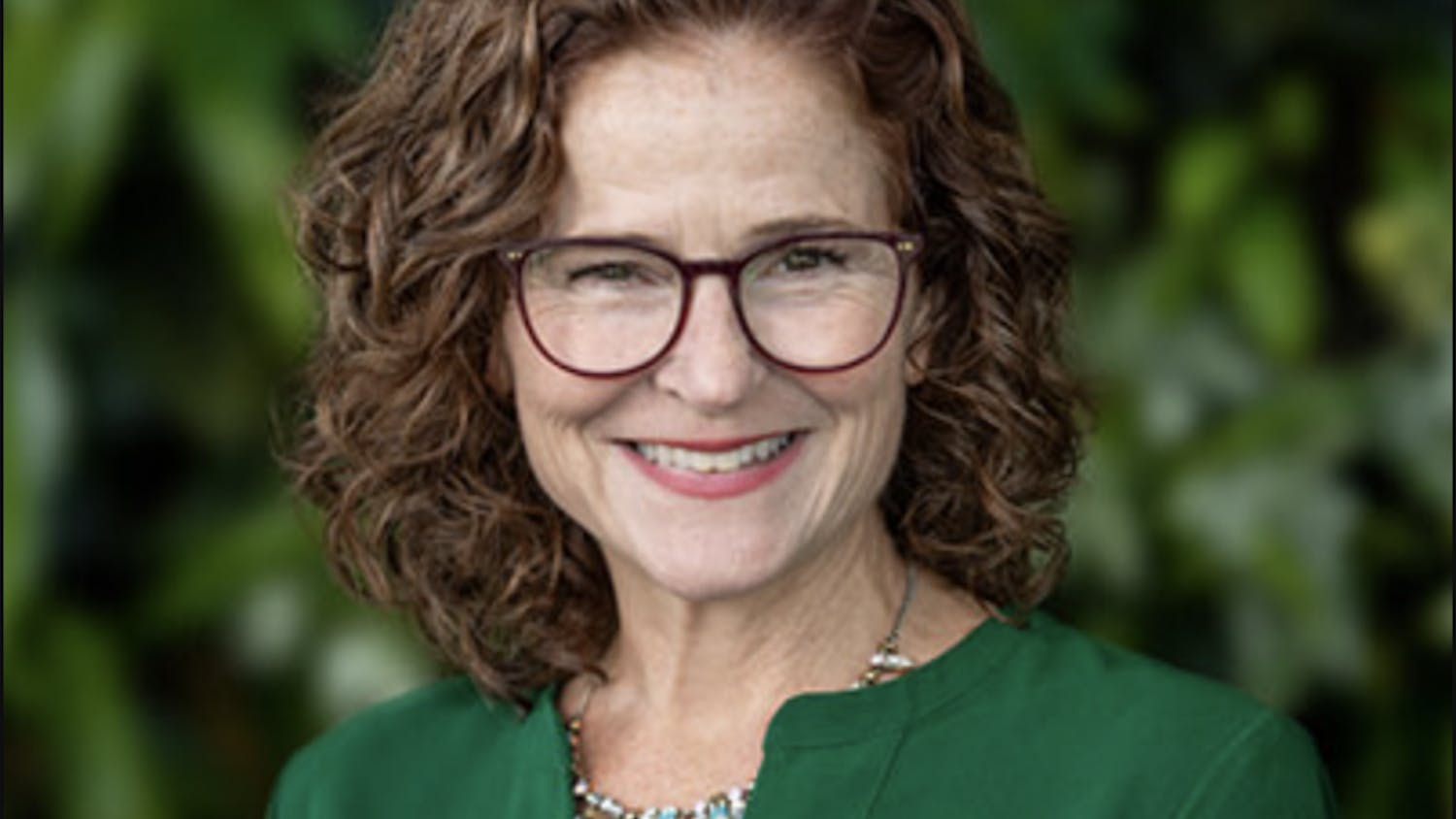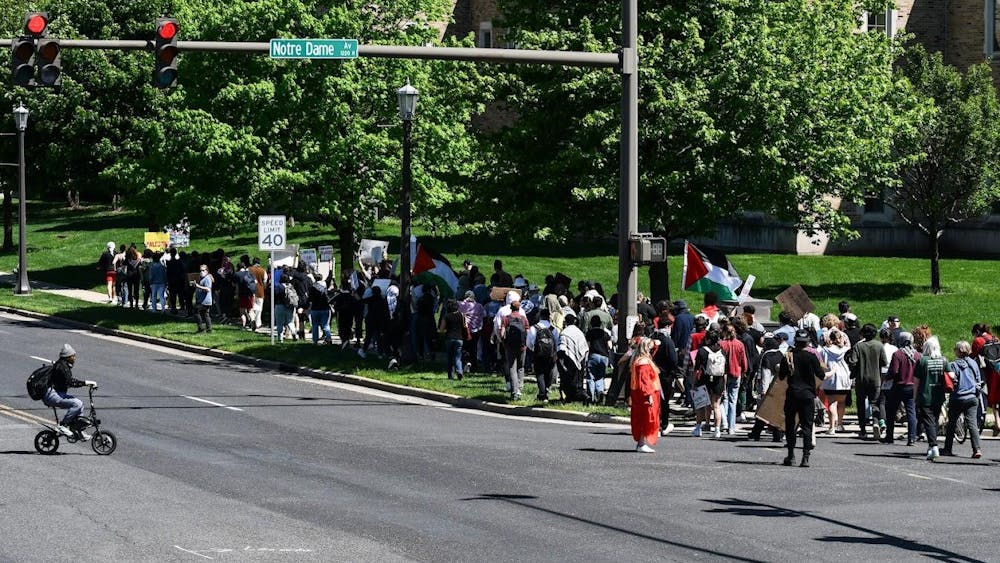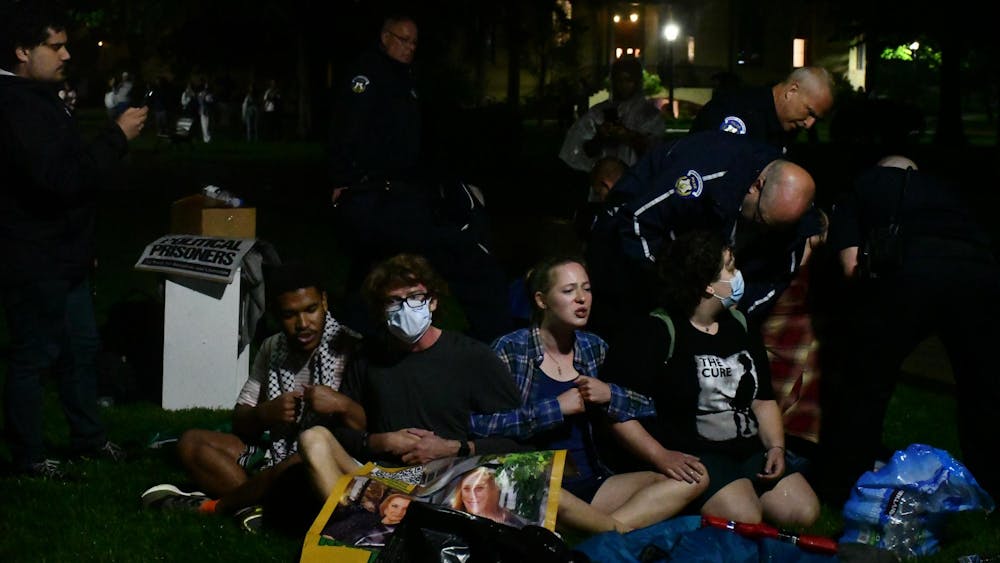She can cheer a touchdown, dance to Michael Jackson's "Thriller" and play "Simon Says," but she doesn't have a heartbeat.

Meet one of the most recent additions to the Psychology Department's family, Kelly the robot.
With two robots named Brian and Kelly, professors are running an innovative study on autism therapy in the Notre Dame Center for Families and Children.
In what is affectionately known as the Robot Autism Project, professors Joshua Diehl, Charles Crowell and Michael Villano use these interactive humanoid robots to improve therapy for children with autism. This is an extremely prevalent issue, Diehl said, approximating one person in every 100 people has autism.

"We know a little about what causes autism, and there's a lot of focus on understanding it," he said. "But there's little focus on how we can effectively help the children by improving the therapies out there."
This study is shifting that focus toward technology, Crowell said. He and Villano recognized their opportunity when they saw Aldebran Robotics demonstrating the Nao model robot at a conference two years ago. After gathering the funds, they asked Diehl to join them, and the study began last fall.
"The suggestion was including robot technology in therapy and observing how it might open doors that might otherwise remain unopened to children with autism," Crowell said.
To do this, Diehl said, they set up a therapy session involving a therapist, a child with an Autism Spectral Disorder (ASD) and the robot. From a room protected by a one-way mirror, a puppeteer controls the behaviors of the robot.
"The initial idea was that the robot would be an interaction partner who the child could practice carrying on or initiating a conversation with," Diehl said. "But there are so many other roles that the robot can take. It can provide encouragement, or it can play different games and work on imitation skills."
When a child practices a behavior correctly, Kelly the robot will answer with positive feedback, often in the form of a dance or motion, Villano said. These include "Thriller" and raising the robot's arms in the air as a "touchdown." The robot can also be programmed to specifically reflect a child's interests and encourage him or her with related movements.
"Over the summer, one kid really liked swimming and the movie ‘Shrek,'" Villano said. "So we'd have it do swimming motions for encouragement and it would talk about Shrek."
But this robot isn't your average toy-store robot, Crowell said. In just playing "Simon Says," the robot uses complex programs to detect movement, answer the child's requests and mimic actions.
"It's about two feet tall and is packed with a lot of technology. Just like a real human, it has senses," he said. "It has cameras that allow vision, voice synthesis mechanisms for speech, and other sensors like sonar, as well as a touch sensitive part of its head."
Since its beginning, the three professors agree the project has taken off rapidly.
"It's gone very quickly from a pipe dream to a full-blown study," Diehl said.
Yet this study wouldn't have happened without large collaborative efforts from the three professors, a team of Notre Dame and Saint Mary's students and the community, Villano said. Each of these components has put forth hard work that has moved the project forward at this lightning-quick pace.
"One of the most important things that we have is a group of students that are amazing that have given so much to the project," Diehl said. "They've made major intellectual contributions to the development and institution of the project."
Some of these students include Notre Dame graduate student Karen Tang, junior Margaret Millea, junior Kristen Uhland and Brynn Thomas, who is a senior at Saint Mary's. Thomas joined the study after taking a class based around autism.
"I have a sister with high-functioning autism, so when Professor Diehl came into the class to talk about his research study, I thought it was interesting," she said. "So I asked him how I could be a part of it and got involved in this."
Millea said she asked Diehl during office hours, and the project has been very rewarding.
"Autism in general is an interesting field. There's just so much we don't know," she said. "I like that Professor Diehl focuses on the strengths of the kids rather than their deficits."
Notre Dame and Saint Mary's students have actually done the majority of the robot's programming, Villano said. Other ways they work on the project include acting as the therapist or puppeteer in the sessions. Diehl said some of these students will work as interns on the project next summer.
"We have a road map. In late fall or early second semester this year, we're going to collect another set of pilot data," he said. "By next summer, we're going to go full-tilt-boogey and we have funding for a couple of students to work with us."
They are always looking for talented students interested in contributing to the ASD community from all areas of expertise, Diehl said. In the end, it's about what can be done for the children with autism.
"This is bringing technology to a problem that effects very real people," Villano said. "The applied side of this is rewarding because we're impacting these families' lives."
Crowell agreed and added that the Center for Families and Children is a vital aspect of the community now.
"Dr. Diehl is probably too modest to point this out, but this center offers a variety of services to the community," he said. "So we are fortunate to have this center as part of the University, part of the Psychology Department and part of the community."
Even without being part of a center, anyone can make an effort to support people with autism. Villano, as an assistant Scout Master for a Boy Scout troop with two autistic members, has seen this outside of the study and said patience is key in developing communication.
"They sometimes will be aloof or shout at you, but patience goes a long way," he said. "The interaction may be unusual, but you can try to interact in ways that are meaningful to them."
This project has become a meaningful way to interact with the children, Crowell said. A child with autism is more drawn to the physical world because of a lack of social skills. The robot then acts as a bridge between this physical world and a more human world for the child.
"We have this device that has an object nature as well as a simulated human nature," he said. "Now there is a way to probe a child who would be attracted to this object and bring them to the human realm because it behaves like a human and can emulate human behaviors."












